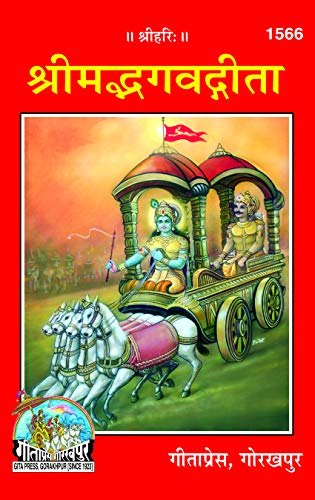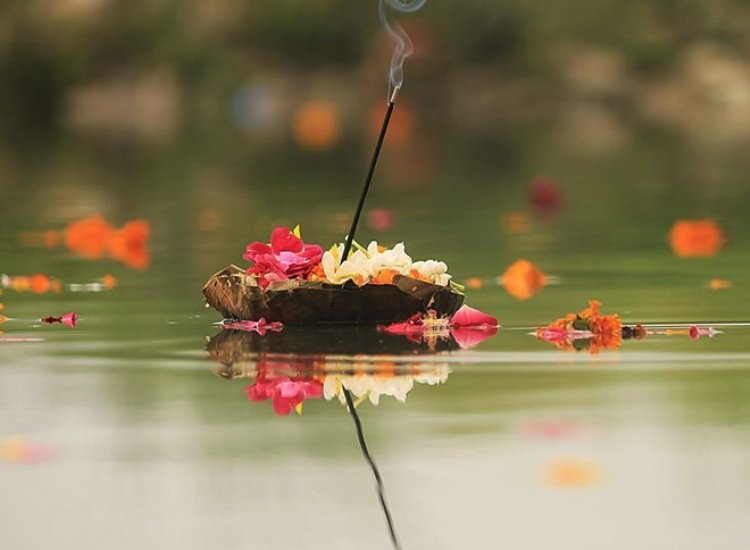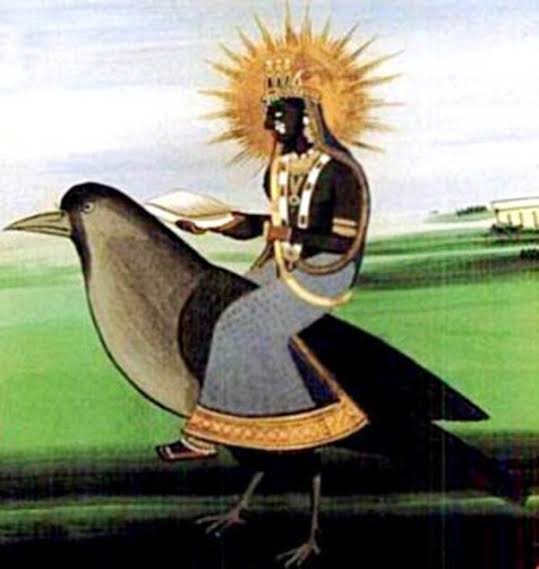Tripundra Dhaaran - Paapa Vimukti
Our generations are fascinated about Tripundram being just a religious symbol. There are in depth meanings of such a Tilak on a Seeker's Forehead
Our generations are fascinated about Tripundram being just a religious symbol. There are in depth meanings of such a Tilak on a Seeker's Forehead
https://twitter.com/HinduMediaWiki/status/1341119434946048000
The very first mistake is the way it is applied.
Tripund isn't applied with dry Bhasm, it should be made wet and then applied in a prescribed manner with proper use of fingers and direction of application. Bhasm is collected from various sources
Tripund isn't applied with dry Bhasm, it should be made wet and then applied in a prescribed manner with proper use of fingers and direction of application. Bhasm is collected from various sources
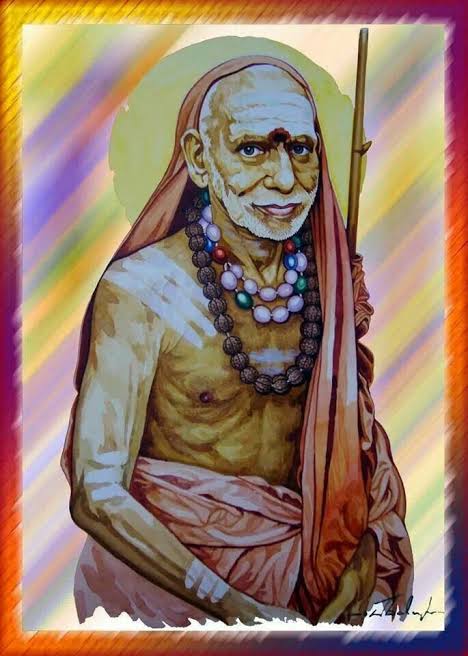
The most important ones mentioned in upanishats are 1. Yagnya Kund Bhasm 2. Bhasm made from Cow's Dung alone. A special agnihotram was perform to save the Bhasma after that for Dhaarana. A major mantra while applying bhasm is Mrutyunjaya Mantra 
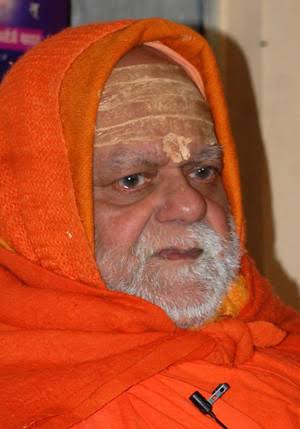
Dwijas have a very long process of applying the Tripundram along with their Sandhyavandanam. For commoners there are some basic rules people have to follow while applying Bhasm 
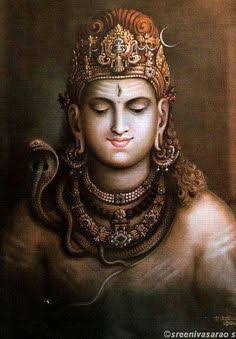
Bhasm Applied in Morning - Should be mixed with water and applied
Bhasm Applied during Afternoon - Should be mixed with Chandan and Applied
Bhasm Applied during and after Pradosh - Should be applied Dry as such

Bhasm Applied during Afternoon - Should be mixed with Chandan and Applied
Bhasm Applied during and after Pradosh - Should be applied Dry as such
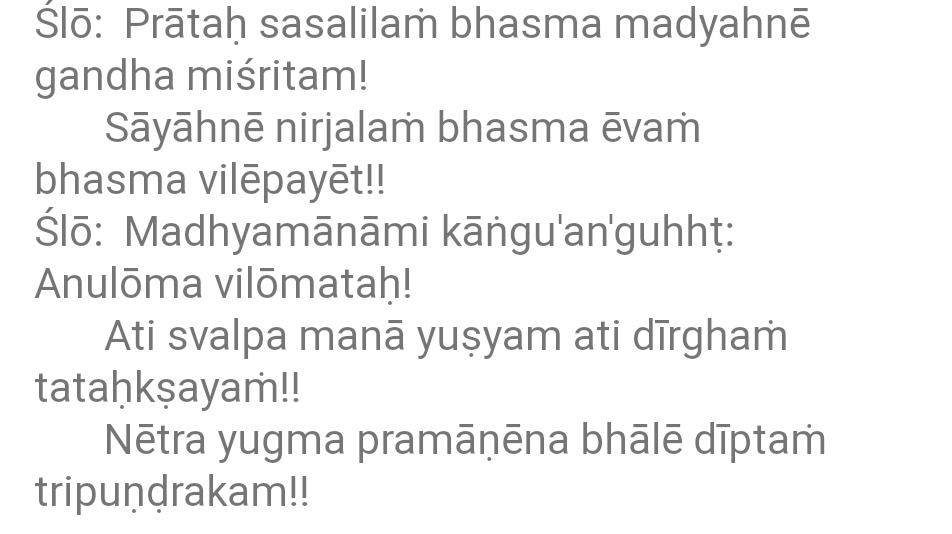

Fingers to be used
1. 1st Finger Thumb
2. Middle Finger
3. Ring Finger
The 3 elements Agni, Akash and Prithvi Tatvas.

1. 1st Finger Thumb
2. Middle Finger
3. Ring Finger
The 3 elements Agni, Akash and Prithvi Tatvas.


One should mix Bhasm with water pr Chandan or dry on left hand palm and then start reading shiva shlokas and then take the Bhasma with Thumb and draw a light line of Naama and take now bhasm with middle and ring finger and apply 2 lines from left to right by chanting Triyambakam 

These 2 lines will be 1st and 3rd lines.Leave good gap in between., and now with thumb from right to left draw a line in between. This completes the Tripundram. No dots are applied on the Tripundra. A Chandan dot with kumkuma is applied in the Trikuti space between the eyebrows. 

Tripund lines should not extend upto ends of eyes. It should remain only on phaala bhaga I.e Forehead. This process is well explained in kalagni Rudra Upanishad and Bhasma Jabala Upanishad. 

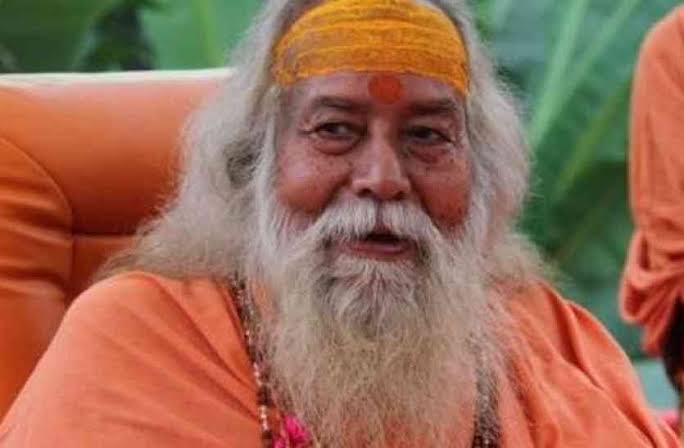

1st line - Garhapatya (the sacred fire in a household kitchen)
A syllable of Om the Rajas guna
The Earth element
The External Atman
Kriyā Shakti– The power of action, The Rigveda
The morning extraction of Soma rasa and The presiding Lord is Maheshvara
A syllable of Om the Rajas guna
The Earth element
The External Atman
Kriyā Shakti– The power of action, The Rigveda
The morning extraction of Soma rasa and The presiding Lord is Maheshvara

2nd Line - Dakshinagni (the holy fire lighted in the South for ancestors)
The sound U of Om the Sattva guna
The atmosphere element
The Inner Atman
Iccha Shakti – The power of will The Yajurveda
The midday extraction of Soma Rasa
The presiding lord is Sadasiva
The sound U of Om the Sattva guna
The atmosphere element
The Inner Atman
Iccha Shakti – The power of will The Yajurveda
The midday extraction of Soma Rasa
The presiding lord is Sadasiva

3rd Line - Ahavaniya (the fire used for Homa)
The M syllable in Om the Tamas guna
The Svarga – heaven
The Paramatman (the highest Atman) (Parabhraman)
The Gnyaana Shakti - The power of perception
The Samaveda
The disk extraction of Soma rasa
The presiding lord is Shiva
The M syllable in Om the Tamas guna
The Svarga – heaven
The Paramatman (the highest Atman) (Parabhraman)
The Gnyaana Shakti - The power of perception
The Samaveda
The disk extraction of Soma rasa
The presiding lord is Shiva

Rules :
1. Wear Tripund after Bath
2. Turn towards East and Apply the Tripund
3. Do not wipe off Tripund on odd times of a day esp Apaharna
4. Gopi Chandana is best to mix with Bhasm during afternoon
5. Never wet the Bhasm in evenings
6. Never wear dry Bhasm during mornings
1. Wear Tripund after Bath
2. Turn towards East and Apply the Tripund
3. Do not wipe off Tripund on odd times of a day esp Apaharna
4. Gopi Chandana is best to mix with Bhasm during afternoon
5. Never wet the Bhasm in evenings
6. Never wear dry Bhasm during mornings
Dwijas have various mantras like panchabhrama mantras in Sandhyavandanam etc to wear the Tripund. Tripund represents more than this , the Tri - Triloka Bhu, Bhuva, suvaha. Tri Tapa - Bhoutikam, Deiveekam, Aadhyatmam. Trigunas and 3 duties of Nature Shrushti, Sthiti & Laya 🍀
Bhasm Tripundra is applied at various spots on body based on the practice of the seeker. Basic spots everyone should apply are Forehead, neck, shoulders, chest, and navel. 

Tripundra dhaaran should be a practice and not occasional one. Women also can apply it, but with bhakti and not for fashion, as with the application comes various responsibilities.
TILAK DHARAN MAKES US CONSCIOUS ABOUT OUR KARM AND REMINDS US OUR DHARMA
TILAK DHARAN MAKES US CONSCIOUS ABOUT OUR KARM AND REMINDS US OUR DHARMA

• • •
Missing some Tweet in this thread? You can try to
force a refresh



